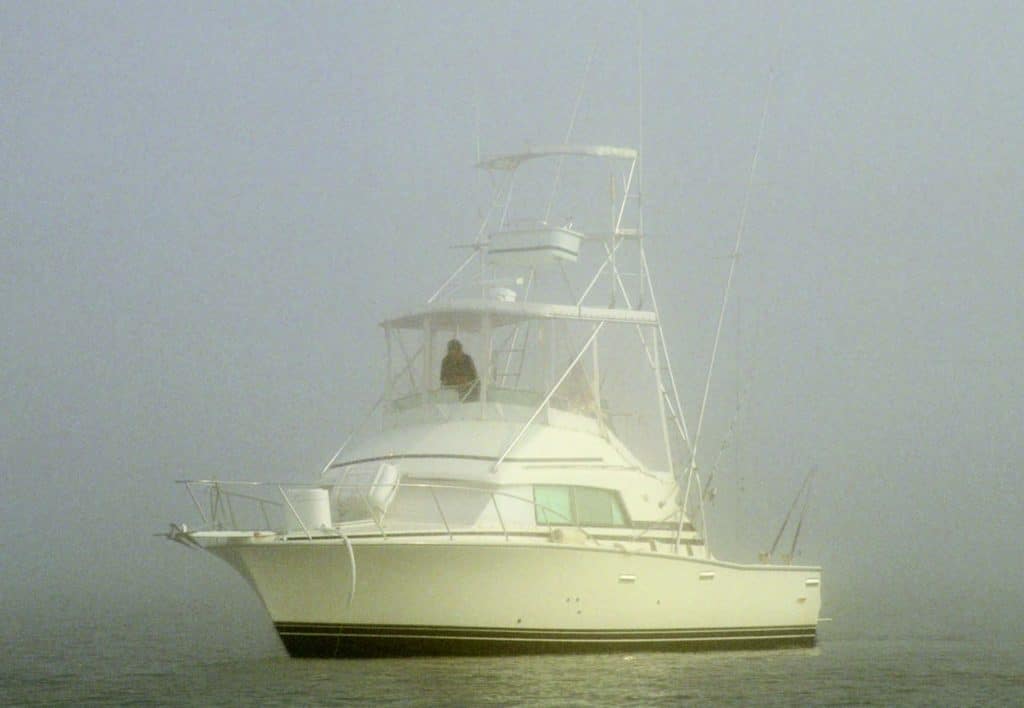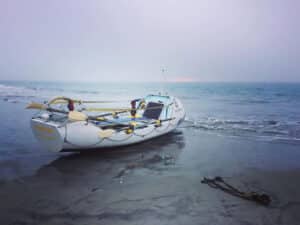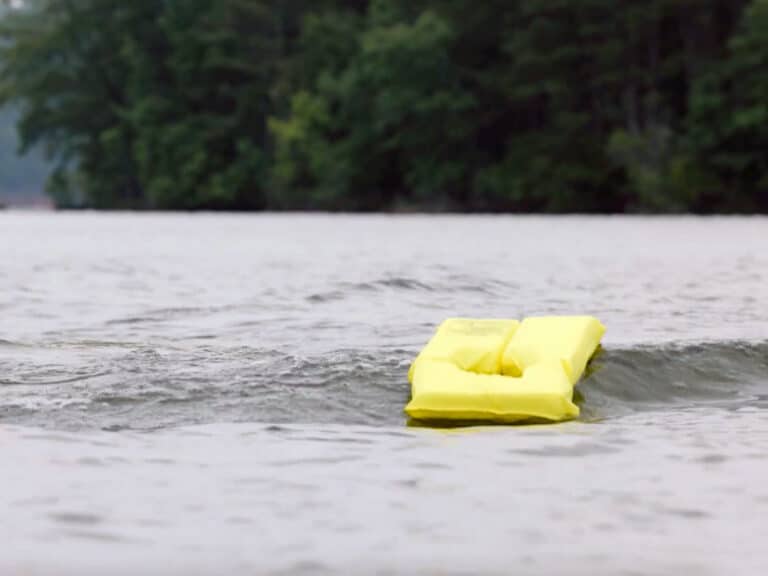
I’m not in the habit of poking around in other people’s engine rooms uninvited, but we were waiting at the dock and everybody else was telling fish tales, so I wandered aft and came upon an open hatch. The engines were ticking over, and I was admiring the layout, when I spotted a streak of rust on a starter motor. Sure enough, there was a drip from the raw-water pump mounted above the motor, and judging by the rust streak, the leak wasn’t new. When I took the owner aside and mentioned it, he laughed and said it had been leaking all season but didn’t seem to be getting worse. He was planning to overhaul the pump soon anyway.
I could say I became outraged at his irresponsibility and stormed off the boat in pompous satisfaction, but that’s not what happened. Instead, I helped cast off the lines. The blues had been hitting hard, and I wanted to get in on the action as much as anyone else on board. Fortunately, we made the trip and returned without incident.
For many of us, the boating season is short. So, if you work hard all week and then, come Friday, discover something as seemingly minor as a leaky pump, it’s easier to decide to go rather than to stay and do some troubleshooting. If you’re playing the odds, you can probably get away with it, but frankly it’s just not smart to do that when you’re going offshore. Sure, I went along for the ride on that sport-fishing boat the day I saw the leak, but I wasn’t the skipper. If that boat had been my responsibility, we would not have left the dock until that pump was replaced or rebuilt and that starter given a good once-over.
Here’s my rule of thumb: Anything that might put the boat in jeopardy or compromise its performance needs to be rectified before the mooring lines are tossed. It’s as simple as that. Many boat owners have a highway mentality: If something breaks, they tell themselves, they’ll call Sea Tow or a similar organization that they perceive to be the marine equivalent of AAA. Yet as proficient as marine tow services are, a disabled vessel offshore is not like a car with a flat. Once the boat is down, the odds are really no longer in your favor.
Mechanical trouble is not the only concern a boat owner has to weigh when deciding to leave the dock or stay. Weather must also be considered. Fortunately, weather forecasts are now very sophisticated. National Oceanic and Atmospheric Administration FM and even longer-range forecasts have a high percentage of accuracy. However, they aren’t going to interpret for us. For instance, if you’re planning a day’s fishing and the forecast is for onshore winds and seas with an offshore shift, you should know you’re going to get rapped in and out. Will the trip be worth it? Also, whenever the forecast calls for a change of some sort during the time you plan to be offshore, it needs further investigation. If NOAA predicts a change in wind direction or strength, it’s probably a good idea to delve beyond the immediate forecast and tune into the weather discussion or go to weather.gov/om/marine/home.htm to find out why. You could be looking at a front that will intensify without much warning, which is a good reason to modify your cruising plans and spend the day working on the boat at the dock. Coastal boaters who cruise in the early spring or fall should know that an onshore wind shift can sometimes precede a fog bank.
On the other hand, if you’re planning to run close inshore and then discover there’s a stiff offshore breeze blowing (intense enough to get you thinking about staying at the dock), you could navigate the NOAA site for real-time conditions in your area, which are created with automated buoy reports updated regularly. You might be pleasantly surprised to learn of flat seas and a near-shore wind that will make for pleasant cruising.
Once you’re off the dock, remember that even the best-laid plans must remain flexible. Years ago, I met one delivery skipper who learned this the hard way after he had pulled into my marina. While under way, his diesel return line had parted and he had juryrigged a fix offshore because he wanted to get the boat to where it needed to be (in the slip next to mine) on time. Because he was on a tight schedule, he had bypassed a half-dozen ports where he could have made a proper repair while en route. Having tied up near me, he went off for a celebratory beer, and that’s when the bilge pump kicked in. His quick fix hadn’t worked well, and he had come in with a bilge full of diesel. The subsequent headaches he suffered far outweighed the benefits of staying on schedule.
Trying to stick to a schedule should be the last consideration you have when either a mechanical or weather-related issue arises. If you’re offshore, get into port — the nearest one — to fix the problem or wait out the weather. If you’re still at the dock and there’s some question as to whether it’s a good idea to venture out, I suggest you err on the safe side and stay home. That’s what I typically do, although I have made exceptions when the fish are really biting.
Preflight Check
Many boaters are pilots, possibly because both avocations appeal to detail-oriented people who recognize the importance of well-functioning machinery. The pilot, for instance, doesn’t begin his takeoff roll until he performs a “walk-around” of the aircraft on the off chance he’ll spot something amiss. Boat owners can take a page from that book and incorporate a “preflight” check of their machinery before leaving the dock.
In addition to inspecting the engine room, do a thorough check after the engines are warmed up. Issues that a cold engine won’t exhibit can arise after it’s been run awhile. For instance, dampness on the outside of a hose that’s ready to let go might not show up until liquid has been run through it for a while. That’s why it’s a good idea to “feel” around hoses whenever possible.
Loss of belt tension can be more apparent after the engine has been running awhile; a pre- and post-warm-up “yank” can tell you a lot. A water pump leak will be easier to spot during or immediately after a run-up. On some installations, movement of a belt pulley will indicate a worn bearing that might not show up until the engine has been run. The smell of burned wires can be telling, as can the smell of hot coolant after the engine has run for a while. Both are cause for further examination.
The U.S. Coast Guard is asking all boat owners and operators to help reduce fatalities, injuries, property damage, and associated healthcare costs related to recreational boating accidents by taking personal responsibility for their own safety and the safety of their passengers. Essential steps include: wearing a life jacket at all times and requiring passengers to do the same; never boating under the influence (BUI); successfully completing a boating safety course; and getting a Vessel Safety Check (VSC) annually from local U.S. Coast Guard Auxiliary, United States Power Squadrons(r), or your state boating agency’s Vessel Examiners. The U.S. Coast Guard reminds all boaters to “Boat Responsibly!” For more tips on boating safety, visit www.uscgboating.org.








